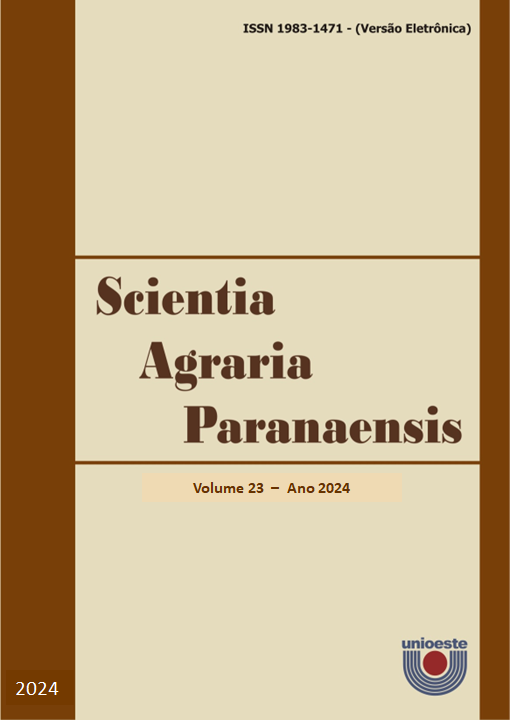Stem bending and macronutrient allocation from mutamba seedlings
DOI:
https://doi.org/10.18188/sap.v23.31066Resumo
Seedling mineral nutrition affects the allocation of biomass to the various components above and below ground. Hardening or acclimatization via mechanical treatment has resulted in differentiated nutritional allocation among plant tissues. Guazuma ulmifolia Lamarck seedlings 90 days after sowing (DAS) were subjected to four daily frequencies of stem bending (zero, 10, 20 or 40 flexions) and evaluated for stress and macronutrient allocation.The tested treatments did not show stress induction in the seedlings when measured by the PER test but increased the calcium and magnesium contents of the stems. The use of 10 daily stem bending resulted in an increase in nitrogen concentration in stem tissues, while phosphorus concentration increased in both stem and roots. The imposition of 10 or 20 daily stem bending provided a reduction in the potassium concentration in the roots, as well as an increase in the calcium and magnesium contents in the stem.
Downloads
Publicado
Como Citar
Edição
Seção
Licença
Aviso de Direito Autoral Creative Commons
Política para Periódicos de Acesso Livre
Autores que publicam nesta revista concordam com os seguintes termos:
1. Autores mantém os direitos autorais e concedem à revista o direito de primeira publicação, com o trabalho simultaneamente licenciado sob a Licença Creative Commons Attribution que permite o compartilhamento do trabalho com reconhecimento da autoria e publicação inicial nesta revista.2. Autores têm autorização para assumir contratos adicionais separadamente, para distribuição não-exclusiva da versão do trabalho publicada nesta revista (ex.: publicar em repositório institucional ou como capítulo de livro), com reconhecimento de autoria e publicação inicial nesta revista.
3. Autores têm permissão e são estimulados a publicar e distribuir seu trabalho online (ex.: em repositórios institucionais ou na sua página pessoal) a qualquer ponto antes ou durante o processo editorial, já que isso pode gerar alterações produtivas, bem como aumentar o impacto e a citação do trabalho publicado (Veja O Efeito do Acesso Livre).
Licença Creative Commons
Esta obra está licenciada com uma Licença Creative Commons Atribuição-NãoComercial-CompartilhaIgual 4.0 Internacional, o que permite compartilhar, copiar, distribuir, exibir, reproduzir, a totalidade ou partes desde que não tenha objetivo comercial e sejam citados os autores e a fonte.


